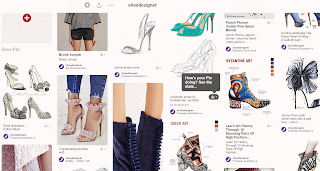Photo: Dubs Universe Kids sustainable sneaker brand is the newest sustainable brand we have worked on.
If you ask many folks in the shoe trade for a sustainable shoe factory their answer could be ????
There are factories that make sustainable footwear, but they make other footwear too. There are factories that get inspected regularly to make sure that they treat their employees well and don’t have any harmful processes. But that's down to you, the customer of the factory to set it up. When you employ a factory, you ask the questions, you conduct the inspections (or pay someone to do so), you do the research in order to create the tech pack in a way that the footwear is made in a sustainable way.
If you tell me that you want to create sustainable footwear, then I want to know, 'what do you mean by that, can you clarify?' Because it's a broad subject and I need to know your focus in order to guide you.
The United States Environmental Protection Agency says -
Sustainable manufacturing is the creation of manufactured products through economically-sound processes that minimize negative environmental impacts while conserving energy and natural resources.
So, thinking about your sustainable footwear brand, what aspects will you focus on ? Here's some I can think of.
Worker rights and a living wage - I can’t think of any sustainable brand that doesn’t care about their workers. Our working relationships with our factories and agents can feel like extended family. We want to make sure they are recognised for their efforts and can afford to pay their bills and live comfortably.
Carbon Footprint - whether it’s the distance from your factory to your marketplace and the air or shipping miles involved, or the carbon footprint of the materials you use, or the carbon footprint of your manufacturer, reducing the impact of footwear production is something we all want to do.
Recycled materials - this is a popular request that we receive - on face value this is a great idea, but some recycled materials don’t perform as well as virgin materials. Durability is part of sustainability so we make a decision based on the performance of the material. We don't release new products without testing them!
Circularity - Whether your shoes are made of recycled materials or not, the unfortunate truth is that your shoes will be incinerated at the end of their life - shoes cannot normally be disassembled into component parts for recycling. innovations in this area include: shoes that can be composted, shoes that can be disassembled, shoes that are designed to be refurbished and donated and shoes that can be repaired. While we’re on the subject of circularity, leather was the first circular material that man developed, because it uses leftover waste from hunting and eating animals.
Preventing Pollution - Manufacturing processes can cause pollution, read through these horrifying statistics:- https://herbones.com/fast-fashion-statistics/.
There are new processes that use less water, for instance waterless dying, in Italy there is a vegetable tanning consortium and the tanneries involved in that pledge to purify all water used in the processes, new technologies such as flyknit and additive manufacture have less waste material at the end of the process.
Designing for Zero Waste - some brands actively design for zero waste, for instance knitted uppers are not cut out, so there are no offcuts left over, other designers work on pattern engineering in order to cut out waste, or have processes to recycle leftover parts. 3D design means that there is less prototyping needed and therefore less unwanted samples leftover.
Vegan - Doesn’t always mean sustainable, there are many petrochemical materials that are vegan and not so great for the planet, BUT there are new materials developed that are not only vegan but are made from plant based materials.
So, what is your focus? What do you feel most strongly about, we want to hear!











